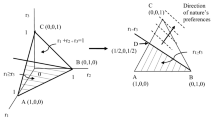Abstract
The development of modern life assurance started in the year 1693 when Edmond Halley published the first mortality tables based on reliable empirical data. Since then, there has always been a direct and intimate relation between mathematics on the one hand and the insurance business — not restricted to personal insurance — on the other hand. In particular the models and methods of risk theory, developed in the 20th century and based on probability theory and mathematical statistics, have made it possible to describe substantial parts of the insurance business quantitatively, thus providing a sound basis for managerial decisions like premium calculation, reservation and the type and size of reinsurance. The emergence of informatics or computer science in the past two or three decades has influenced the insurance industry in two ways. On the one side, computers allow of complicated and large-scale numerical calculations. On the other side, the use of electronic data processing has revolutionized the administration of the whole insurance business.
Preview
Unable to display preview. Download preview PDF.
Similar content being viewed by others
References
D’ARCY, S. P. and DOHERTY, N. A. (1988), The Financial Theory of Pricing Property-Liability Insurance Contracts, Irwin, Homewood.
DAYKIN, C. (1991), “The Role of Actuaries in the Development of Insurance Supervision in the EC”, Mitteilungen der Schweizerischen Vereinigung der Versicherungsmathematiker 2 /1991, 171–202.
GERBER, H. U. (1990), Life Insurance Mathematics, Springer, Berlin.
HEILMANN, W.-R. (1988), Fundamentals of Risk Theory, Verlag Versicherungswirtschaft, Karlsruhe.
HEILMANN, W.-R. (1992), “Anwendungen des Operations Research im Tertiären Sektor–können Finanzdienstleistungen geplant und gesteuert werden?”, Operations Research Proceedings 1991,1–9, Springer, Berlin.
HEILMANN, W.-R., et al., eds. (1992), Geld, Banken und Versicherungen Vol. I, H, Verlag Versicherungswirtschaft, Karlsruhe.
PANJER,H.H.,ed. (1986), Actuarial Mathematics, American Mathematical Society Providence.
SCHWEBLER, R. (1979), Plädoyer für eine analytische Unternehmensplanung in der Versicherungswirtschaft, Verlag Versicherungswirtschaft, Karlsruhe.
STEPHAN, E. (1992), “EDV-unterstützte Kapitalanlagepolitik in Versicherungsunternehmen”, Versicherungswirtschaft 8 /1992, 482 - 488.
Transactions of the 24th International Congress of Actuaries Vol. 5, Montreal 1992.
Author information
Authors and Affiliations
Editor information
Editors and Affiliations
Rights and permissions
Copyright information
© 1993 Springer-Verlag Berlin · Heidelberg
About this chapter
Cite this chapter
Schwebler, R., Heilmann, WR. (1993). On the Influence of Mathematics and Informatics on the Modern Insurance Industry. In: Diewert, W.E., Spremann, K., Stehling, F. (eds) Mathematical Modelling in Economics. Springer, Berlin, Heidelberg. https://doi.org/10.1007/978-3-642-78508-5_56
Download citation
DOI: https://doi.org/10.1007/978-3-642-78508-5_56
Publisher Name: Springer, Berlin, Heidelberg
Print ISBN: 978-3-642-78510-8
Online ISBN: 978-3-642-78508-5
eBook Packages: Springer Book Archive




